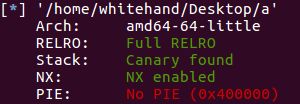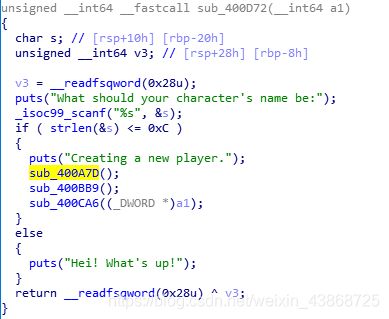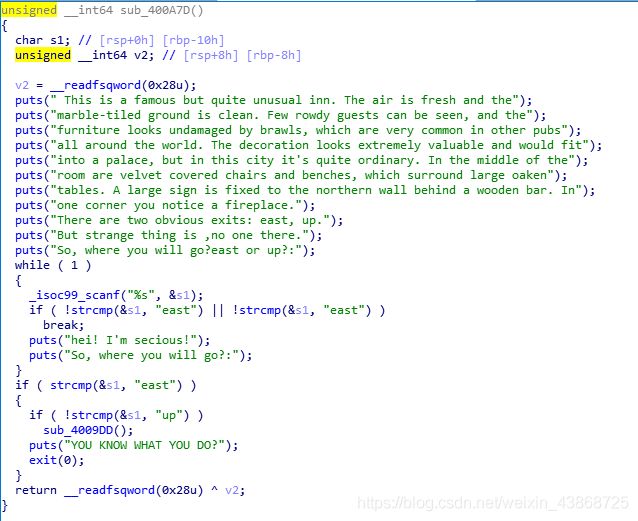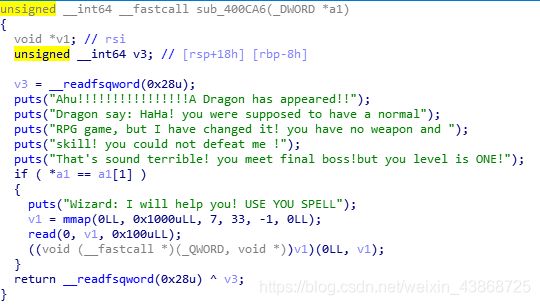- Python开发从新手到专家:第三章 列表、元组和集合
caifox菜狐狸
Python开发从新手到专家python元素集合列表元组数据结构字典
在Python开发的旅程中,数据结构是每一位开发者必须掌握的核心知识。它们是构建程序的基石,决定了代码的效率、可读性和可维护性。本章将深入探讨Python中的三种基本数据结构:列表、元组和集合。这三种数据结构在实际开发中有着广泛的应用,从简单的数据存储到复杂的算法实现,它们都扮演着不可或缺的角色。无论你是刚刚接触Python的新手,还是希望进一步提升编程技能的开发者,本章都将是你的宝贵指南。我们将
- Effective C 中文版资源下载
史剑咪Nessa
EffectiveC中文版资源下载去发现同类优质开源项目:https://gitcode.com/欢迎来到本仓库!这里提供了一个非常实用的资源——EffectiveC中文版.pdf。这本书深入浅出地介绍了C语言编程中的各种技巧和最佳实践,无论你是C语言的新手还是有一定基础的程序员,都能从中获得宝贵的知识。本书详细讲解了C语言的各个方面,包括基础语法、高级特性、内存管理、效率优化等。通过阅读本书,你
- 产品背景知识——Region和Zone
爱吃芝麻汤圆
#产品背景知识分布式
产品背景知识——Region和Zone一、基本定义1.Region(区域)含义:通常指较大范围的地理区域,可包含多个物理位置或数据中心。例子:在云计算中,如AWS的“亚太地区(东京)”“北美地区(弗吉尼亚)”就是不同的region,每个region是一个独立的地理区域,包含多个可用区(zone)。地图服务中,“华东地区”“欧洲地区”也属于region范畴。2.Zone(可用区/区域)含义:范围小于
- 【Java】已解决java.sql.SQLRecoverableException异常
屿小夏
java开发语言
个人简介:某不知名博主,致力于全栈领域的优质博客分享|用最优质的内容带来最舒适的阅读体验!文末获取免费IT学习资料!文末获取更多信息精彩专栏推荐订阅收藏专栏系列直达链接相关介绍书籍分享点我跳转书籍作为获取知识的重要途径,对于IT从业者来说更是不可或缺的资源。不定期更新IT图书,并在评论区抽取随机粉丝,书籍免费包邮到家AI前沿点我跳转探讨人工智能技术领域的最新发展和创新,涵盖机器学习、深度学习、自然
- git 总结+场景应用
放逐者-保持本心,方可放逐
工具配置gitgit远程连接git标签git应用git打包迁移git版本控制git新手应用
文章目录概要(git)git冲突经验之谈git相关操作后续git具体应用回退到指定版本git校验忽略git版本标签管理git代码仓库迁移gitbundle后续git新手应用指南概要(git)一、Git简介Git是一个分布式版本控制系统,用于高效地处理从非常小到非常大的项目版本管理。它允许开发者跟踪文件的更改历史,方便团队协作开发,并且可以在不同分支上进行并行开发。二、基础指令连接(配置)gitco
- 6,FreeRTOS临界区代码保护与任务调度器的挂起与恢复
自激振荡器
FreeRTOS学习笔记单片机stm32嵌入式硬件freeRTOSFreeRTOS
一、临界区代码保护如果我们想在执行某段代码时不被中断打断,此时需要进行临界区代码保护。在临界区内关闭中断,临界区结束后开启中断。需要注意的是临界区的进入和退出需要成对出现,如果进入两次,那么需要退出两次才可以成功开启中断。注:本实验基于正点原子FreeRTOS教程的学习总结。1..所需API函数介绍taskENTER_CRITICAL函数用来进入临界区。在任务中调用。#definetaskENTE
- git常见命令
1.基本操作查看状态gitstatus添加文件到暂存区gitadd#添加单个文件gitadd#添加整个目录gitadd.#添加当前目录所有文件gitadd--all#添加所有变更(包括删除的文件)提交更改gitcommit-m"commitmessage"常用commit类型前缀:build:构建系统修改(如依赖升级)chore:非业务代码修改(如工具配置)ci:CI/CD流程修改docs:文档更
- pwn手记录题3
前言:研究生的生活很充实(忙,大概三年我再也没有时间去认真做题了以下是最近比赛的遇到的题目。仅记录脚本,细节不会再核实了(没时间(;´༎ຶД༎ຶ`))可能以后不太会触碰CTF比赛了强网杯-baby_heapfrompwnimport*context(os='linux',arch='amd64',log_level='debug')binary='./pwn'r=process(binary)el
- 数据结构day5——队列和树
LZA185
数据结构数据结构
目录一、队列:先进先出的数据缓冲区队列的核心概念队列的典型应用场景队列的基本操作队列的两种C语言实现方式1.顺序队列(基于数组的实现)2.循环队列(解决假溢出问题)二、树:一对多的层次结构树的基本概念树的存储方式二叉树:最常用的树结构二叉树的定义二叉树的特点特殊的二叉树二叉树的重要特性二叉树的C语言实现与遍历三、总结在数据结构的世界里,队列和树是两种截然不同却又同样重要的结构。队列以其"先进先出"
- 生命制造的读秒革命:全球首个AI-BioFab工厂72小时全息记录
HeartException
人工智能
前言前些天发现了一个巨牛的人工智能免费学习网站,通俗易懂,风趣幽默,忍不住分享一下给大家。点击跳转到网站《生命制造的读秒革命:全球首个AI-BioFab工厂72小时全息记录》副标题:2025年7月2日14:04深圳现场——癌症疫苗定制最后3分钟如何改写万亿生物经济规则光明科学城2025年7月2日电(记者直击)负三层B区微流控平台红光闪烁,液态机械臂正将第9,217管CRISPR编辑液注入芯片。量子
- 情感反诈模拟器免费下载
2501_92600974
游戏游戏程序
捞女游戏下载安装教程(完整图文+激活码)最近大火的捞女游戏你还没玩?本文手把手教你下载安装,附激活码与两种安装方法,图文详细,轻松上手!目录方法一:一键安装(适合新手)方法二:使用PowerShell安装(适合熟练用户)✅方法一:一键安装(适合新手)下载地址:点击下载(蓝奏云)提取码:cn6h解压后运行.exe安装程序安装完成后游戏会自动添加到Steam游戏库中⚙方法二:使用PowerShell安
- 【Maven】Maven 新手全面入门指南,核心概念 maven安装配置优化,项目创建与项目结构介绍核心Maven命令
夜雨hiyeyu.com
javamavenjavaspringboot后端gradle系统架构软件构建
Maven新手全面入门指南一、Maven简介Mavenvs其他构建工具二、核心概念1.POM(ProjectObjectModel)2.坐标系统(GAV)3.依赖管理4.仓库(Repository)5.构建生命周期三、Maven安装与配置1.安装步骤2.配置优化(settings.xml)四、项目创建与结构1.创建新项目2.标准项目结构五、核心Maven命令基本命令进阶命令六、完整pom.xml示
- 2021 SoK: The Progress, Challenges, and Perspectives of Directed Greybox Fuzzing
席八
论文阅读综述安全
摘要灰盒模糊已经成为最具可扩展性和实用性的软件测试方法。大多数灰盒模糊工具都是基于覆盖率的,因为代码覆盖率与bug覆盖率是紧密相关的。然而,由于大多数覆盖的代码可能不包含错误,盲目扩展代码覆盖的效率较低,特别是在角落的情况下。不像基于覆盖的fuzzer以一种无方向的方式扩展代码覆盖,有方向的fuzzer将大部分的时间预算花在到达特定的目标位置(例如,bug倾向区)而不会浪费资源去强调不相关的部分。
- 游戏服务器:分区分服 vs 全区全服深度解析
你一身傲骨怎能输
游戏行业领域知识专栏服务器架构
下面详细分析游戏服务器分区分服与全区全服的区别,涵盖原理、优缺点、适用场景、技术实现等多个维度。一、基本概念1.分区分服分区分服指的是:游戏服务器被划分为多个“区”或“服”,每个区服是一个相对独立的世界,玩家只能在自己选择的区服内进行游戏、交互、排名、交易等。例如:一区、二区、三区,或“电信一区”、“网通二区”等。2.全区全服全区全服指的是:所有玩家都在同一个大世界中,或者不同区服的玩家可以无障碍
- 脑机新手指南(二十)BCI2000 新手入门指南(下篇)
Brduino脑机接口技术答疑
脑机新手指南人工智能算法大数据
一、引言在上篇文章中,我们介绍了BCI2000的基本概念、特点和优势,以及安装、配置和基本使用流程。在本篇文章中,我们将深入探讨BCI2000的信号处理和分类算法,并提供一些实操的代码教程,帮助新手更好地掌握BCI2000的使用方法。二、BCI2000的信号处理(一)信号处理的基本概念在脑机接口系统中,信号处理是一个非常重要的环节,它的主要目的是从原始的脑电信号中提取有用的信息,并去除噪声和干扰。
- 脑机新手指南(十七)EEG-ExPy 新手入门教程(上篇):基础概念与环境搭建
Brduino脑机接口技术答疑
脑机新手指南新手入门算法脑机接口
一、EEG-ExPy是什么?EEG-ExPy是一个基于Python的开源工具包,专为脑电(EEG)实验设计、数据采集和实时分析而开发。它的核心优势在于低门槛易用性和模块化设计,即使是没有编程基础的新手,也能通过简单的代码或图形界面快速搭建EEG实验流程。其功能覆盖:1.自定义实验范式设计(如视觉刺激、运动想象任务)2.实时EEG信号采集与预处理3.简单的脑机接口(BCI)应用开发4.实验数据的存储
- 脑机新手指南(十五)speechBCI 项目新手入门指南(上):项目概述、代码结构与环境搭建
Brduino脑机接口技术答疑
脑机新手指南python脑机接口新手入门
一、引言在脑机接口(BCI)领域,语音相关的研究正不断取得突破。speechBCI项目为语音脑机接口的研究提供了一个优秀的开源代码库。该项目与前沿的学术研究、丰富的数据集以及具有挑战性的机器学习竞赛紧密相连。本指南将分上下两篇,详细引导新手深入了解和使用speechBCI项目。二、项目概述speechBCI项目不仅仅是一个代码集合,它背后有着深厚的学术背景和实际应用价值。它与一篇发表在[Natur
- 脑机新手指南(十二):BciPy 脑机接口工具入门(下篇):核心功能与实践应用
Brduino脑机接口技术答疑
脑机新手指南人工智能算法机器学习
一、BciPy核心模块深度解析(一)信号采集与处理模块(acquisition&signal)1.信号采集流程BciPy通过LabStreamingLayer(LSL)协议实现多设备同步采集:frombcipy.acquisitionimportLslStreamer # 初始化LSL流采集器 streamer=LslStreamer() streamer.connect() # 连接到EEG设
- 脑机新手指南(七):OpenBCI_GUI:从环境搭建到数据可视化(上)
Brduino脑机接口技术答疑
脑机新手指南脑机接口算法人工智能新手入门
一、OpenBCI_GUI项目概述(一)项目背景与目标OpenBCI是一个开源的脑电信号采集硬件平台,其配套的OpenBCI_GUI则是专为该硬件设计的图形化界面工具。对于研究人员、开发者和学生而言,首次接触OpenBCI设备时,往往面临数据可视化、实时处理及跨平台兼容性等挑战。OpenBCI_GUI的核心目标是为所有OpenBCI设备(包括Ganglion、Cyton及CytonwithDais
- 脑机新手指南(三):新手小白入门 BCI-从认识到初体验(上)
一、引言脑机接口(Brain-ComputerInterface,简称BCI)作为一项前沿科技,正逐渐改变我们对大脑与外部设备交互方式的认知。本教程旨在为完全不了解BCI的新手提供一个全面且系统的入门指南,帮助大家开启在BCI领域的学习之旅。二、认识BCIBCI的定义BCI是一种能够实现大脑与外部设备直接通信的技术。它通过检测大脑活动产生的电信号、磁信号或其他生理信号,并将这些信号转化为计算机能够
- 脑机新手指南(二十一)基于 Brainstorm 的 MEG/EEG 数据分析(上篇)
Brduino脑机接口技术答疑
脑机新手指南数据分析数据挖掘
一、脑机接口与神经电生理技术概述脑机接口(Brain-ComputerInterface,BCI)是一种在大脑与外部设备之间建立直接通信通道的技术,它通过采集和分析大脑信号来实现对设备的控制或信息的输出。神经电生理信号作为脑机接口的重要数据来源,主要包括以下几种类型:MEG(脑磁图):通过测量大脑神经元电活动产生的磁场变化来反映脑功能,具有极高的时间分辨率。EEG(脑电图):通过头皮电极记录大脑皮
- [Unity网络游戏实战]网络游戏的“Hello,World”——Echo(回响)(新手向)
码穿地球
unity游戏引擎
网络游戏的“Hello,World”——Echo(回响)文章目录网络游戏的“Hello,World”——Echo(回响)1,Socket1.1Socket1.2IP地址1.3端口1.4Socket通信流程1.5TCP和UDP协议2.3开始网络编程:Echo2.3.1什么是Echo程序2.3.2编写客户端程序2.4完成客户端2.5创建服务端2.5.1服务端知识点2.6测试Echo程序1,Socket
- 《ChromaGAN》论文简读及demo运行(萌新手记)
kkpeach
学习手记python机器学习计算机视觉
论文题目:《ChromaGAN:AdversarialPictureColorizationwithSemanticClassDistribution》《具有语义类别分布的对抗图片着色》论文地址:https://arxiv.org/pdf/1907.09837.pdf源码地址:https://github.com/pvitoria/ChromaGAN声明:仅学习用途。这是WACV2020收录的一篇
- uniapp(vue3) - 实现天气预报气象温度双折线图一周气温变化曲线图,uniApp使用秋云uCharts图表插件做天气预报折线图示例代码(全端兼容H5网页、小程序、安卓/苹果app、nvue)
十一猫咪爱养鱼
前端组件与功能(开箱即用)uniapp常见问题解决uni-app天气预报未来一周天气温度天气预报温度折线图表uniapp做天气预报曲线图绘制最低温度和最高温度曲线图uniapp天气预报示例代码
效果图在uni-app手机h5网页网站/支付宝微信小程序/安卓app/苹果app/nvue等(全平台兼容)开发中,实现uniapp天气预报双折线图温度图表示例源码,展示未来7天一周的天气温度情况点状折线图天气预报,Uniapp全平台实现气象监测页面查看温度变化,可自行修改优化线条颜色、粗细、数值及背景图等自由修改,提供完整源码!新手小白直接复制源码运行后简单修改即可。引入插件如果你已经引入过了,这
- Java中的I/O流
白仑色
javajavaI/O流字节流字符流
Java中的I/O流Java中的I/O流(Input/OutputStreams)是用于处理输入和输出操作的类。这些流可以用来读取或写入数据,无论是从文件、网络连接还是内存缓冲区。JavaI/OAPI位于java.io包中,并分为字节流和字符流两大类。字节流在Java中,字节流主要用于处理以字节为单位的数据输入和输出操作。它们非常适合处理二进制数据,如图像文件、音频文件等,也可以用于文本文件的读写
- Linux系统编程:线程 2 :互斥锁
niikkoo
linuxc语言
1.互斥锁的用处线程之间会有资源竞争,这个资源是共享资源(临界资源),访问共享资源的那段代码叫临界区,当多个线程同时运行时,会发生资源竞争,可能在一个线程还没有执行完毕另一个线程就去使用资源了,导致在某些场景下程序的结果与预期不同,互斥锁可以解决这类问题。2.互斥锁的原理原理:互斥(排他性)——要么不访问资源,访问一次就是一次完整的操作(原子操作)锁的操作机制框架:定义互斥锁-->初始化锁-->加
- 『 Linux 』多线程互斥锁
Dio夹心小面包
进程线程Linuxlinuxandroid运维c++c语言
文章目录资源竞争pthread_mutex互斥锁临界区与互斥锁的使用饥饿问题互斥锁的原理及其原子性锁的封装重入与线程安全问题死锁概念资源竞争当一个进程中多个线程同时对一个共享资源进行访问时将可能导致数据不一致问题;#defineNUM5intg_val=700;classthreadData{//封装一个线程的基本信息用于描述线程public:threadData(constintnumber){
- Gitee 新手入门指南
亿只小灿灿
常用工具日常小分享gitee
一、Gitee简介Gitee是一个基于Git的代码托管平台,类似于GitHub,为开发者提供了代码存储、版本控制、协作开发等一系列功能。它在国内拥有较高的访问速度和稳定性,支持私有仓库和公有仓库,方便个人开发者、团队以及企业进行项目的管理和开发,无论是小型的个人项目还是大型的团队协作项目,都能在Gitee上找到合适的应用场景,助力开发流程的高效进行。二、注册与安装注册Gitee账号访问Gitee官
- 什么是嵌入式?一篇文章让你彻底搞懂!
欢乐熊嵌入式编程
嵌入式开发嵌入式硬件单片机学习单片机
什么是嵌入式?一篇文章让你彻底搞懂!一提起“嵌入式”,很多新手脑子里立刻浮现四个大字:听不懂!没关系,今天这篇文章,我们就用讲故事、打比方、怼术语的方式,让你一次搞懂嵌入式到底是啥玩意儿!先别急着查百度,告诉你啥是“嵌入式”百度百科的解释一般都长成这样:“嵌入式系统是以应用为中心,以计算机技术为基础,软硬件可裁剪,适应应用系统功能、可靠性、成本、体积、功耗严格要求的专用计算机系统。”——你是不是看
- 新手学习linux关于CentOS下载及版本选择
\光辉岁月/
linux
i386是给32位机器使用的,而x86_64适用于64位机器。前者只能使用32位软件,后者可以兼用32位软件,这就是两者区别。如果你的服务器内存超4GB,强烈建议使用64位版本;如果只在虚拟机器里安装学习,那么32位就行了,也就是选择i386版本。如果想做服务器,则建议选64位。进入之后我们看到这样一个界面:这么多文件该怎么选择呢?对新手来说,可能一下子要蒙了。不急,慢慢来。先观察文件后缀名,分.
- 集合框架
天子之骄
java数据结构集合框架
集合框架
集合框架可以理解为一个容器,该容器主要指映射(map)、集合(set)、数组(array)和列表(list)等抽象数据结构。
从本质上来说,Java集合框架的主要组成是用来操作对象的接口。不同接口描述不同的数据类型。
简单介绍:
Collection接口是最基本的接口,它定义了List和Set,List又定义了LinkLi
- Table Driven(表驱动)方法实例
bijian1013
javaenumTable Driven表驱动
实例一:
/**
* 驾驶人年龄段
* 保险行业,会对驾驶人的年龄做年龄段的区分判断
* 驾驶人年龄段:01-[18,25);02-[25,30);03-[30-35);04-[35,40);05-[40,45);06-[45,50);07-[50-55);08-[55,+∞)
*/
public class AgePeriodTest {
//if...el
- Jquery 总结
cuishikuan
javajqueryAjaxWebjquery方法
1.$.trim方法用于移除字符串头部和尾部多余的空格。如:$.trim(' Hello ') // Hello2.$.contains方法返回一个布尔值,表示某个DOM元素(第二个参数)是否为另一个DOM元素(第一个参数)的下级元素。如:$.contains(document.documentElement, document.body); 3.$
- 面向对象概念的提出
麦田的设计者
java面向对象面向过程
面向对象中,一切都是由对象展开的,组织代码,封装数据。
在台湾面向对象被翻译为了面向物件编程,这充分说明了,这种编程强调实体。
下面就结合编程语言的发展史,聊一聊面向过程和面向对象。
c语言由贝尔实
- linux网口绑定
被触发
linux
刚在一台IBM Xserver服务器上装了RedHat Linux Enterprise AS 4,为了提高网络的可靠性配置双网卡绑定。
一、环境描述
我的RedHat Linux Enterprise AS 4安装双口的Intel千兆网卡,通过ifconfig -a命令看到eth0和eth1两张网卡。
二、双网卡绑定步骤:
2.1 修改/etc/sysconfig/network
- XML基础语法
肆无忌惮_
xml
一、什么是XML?
XML全称是Extensible Markup Language,可扩展标记语言。很类似HTML。XML的目的是传输数据而非显示数据。XML的标签没有被预定义,你需要自行定义标签。XML被设计为具有自我描述性。是W3C的推荐标准。
二、为什么学习XML?
用来解决程序间数据传输的格式问题
做配置文件
充当小型数据库
三、XML与HTM
- 为网页添加自己喜欢的字体
知了ing
字体 秒表 css
@font-face {
font-family: miaobiao;//定义字体名字
font-style: normal;
font-weight: 400;
src: url('font/DS-DIGI-e.eot');//字体文件
}
使用:
<label style="font-size:18px;font-famil
- redis范围查询应用-查找IP所在城市
矮蛋蛋
redis
原文地址:
http://www.tuicool.com/articles/BrURbqV
需求
根据IP找到对应的城市
原来的解决方案
oracle表(ip_country):
查询IP对应的城市:
1.把a.b.c.d这样格式的IP转为一个数字,例如为把210.21.224.34转为3524648994
2. select city from ip_
- 输入两个整数, 计算百分比
alleni123
java
public static String getPercent(int x, int total){
double result=(x*1.0)/(total*1.0);
System.out.println(result);
DecimalFormat df1=new DecimalFormat("0.0000%");
- 百合——————>怎么学习计算机语言
百合不是茶
java 移动开发
对于一个从没有接触过计算机语言的人来说,一上来就学面向对象,就算是心里上面接受的了,灵魂我觉得也应该是跟不上的,学不好是很正常的现象,计算机语言老师讲的再多,你在课堂上面跟着老师听的再多,我觉得你应该还是学不会的,最主要的原因是你根本没有想过该怎么来学习计算机编程语言,记得大一的时候金山网络公司在湖大招聘我们学校一个才来大学几天的被金山网络录取,一个刚到大学的就能够去和
- linux下tomcat开机自启动
bijian1013
tomcat
方法一:
修改Tomcat/bin/startup.sh 为:
export JAVA_HOME=/home/java1.6.0_27
export CLASSPATH=$CLASSPATH:$JAVA_HOME/lib/tools.jar:$JAVA_HOME/lib/dt.jar:.
export PATH=$JAVA_HOME/bin:$PATH
export CATALINA_H
- spring aop实例
bijian1013
javaspringAOP
1.AdviceMethods.java
package com.bijian.study.spring.aop.schema;
public class AdviceMethods {
public void preGreeting() {
System.out.println("--how are you!--");
}
}
2.beans.x
- [Gson八]GsonBuilder序列化和反序列化选项enableComplexMapKeySerialization
bit1129
serialization
enableComplexMapKeySerialization配置项的含义
Gson在序列化Map时,默认情况下,是调用Key的toString方法得到它的JSON字符串的Key,对于简单类型和字符串类型,这没有问题,但是对于复杂数据对象,如果对象没有覆写toString方法,那么默认的toString方法将得到这个对象的Hash地址。
GsonBuilder用于
- 【Spark九十一】Spark Streaming整合Kafka一些值得关注的问题
bit1129
Stream
包括Spark Streaming在内的实时计算数据可靠性指的是三种级别:
1. At most once,数据最多只能接受一次,有可能接收不到
2. At least once, 数据至少接受一次,有可能重复接收
3. Exactly once 数据保证被处理并且只被处理一次,
具体的多读几遍http://spark.apache.org/docs/lates
- shell脚本批量检测端口是否被占用脚本
ronin47
#!/bin/bash
cat ports |while read line
do#nc -z -w 10 $line
nc -z -w 2 $line 58422>/dev/null2>&1if[ $?-eq 0]then
echo $line:ok
else
echo $line:fail
fi
done
这里的ports 既可以是文件
- java-2.设计包含min函数的栈
bylijinnan
java
具体思路参见:http://zhedahht.blog.163.com/blog/static/25411174200712895228171/
import java.util.ArrayList;
import java.util.List;
public class MinStack {
//maybe we can use origin array rathe
- Netty源码学习-ChannelHandler
bylijinnan
javanetty
一般来说,“有状态”的ChannelHandler不应该是“共享”的,“无状态”的ChannelHandler则可“共享”
例如ObjectEncoder是“共享”的, 但 ObjectDecoder 不是
因为每一次调用decode方法时,可能数据未接收完全(incomplete),
它与上一次decode时接收到的数据“累计”起来才有可能是完整的数据,是“有状态”的
p
- java生成随机数
cngolon
java
方法一:
/**
* 生成随机数
* @author
[email protected]
* @return
*/
public synchronized static String getChargeSequenceNum(String pre){
StringBuffer sequenceNum = new StringBuffer();
Date dateTime = new D
- POI读写海量数据
ctrain
海量数据
import java.io.FileOutputStream;
import java.io.OutputStream;
import org.apache.poi.xssf.streaming.SXSSFRow;
import org.apache.poi.xssf.streaming.SXSSFSheet;
import org.apache.poi.xssf.streaming
- mysql 日期格式化date_format详细使用
daizj
mysqldate_format日期格式转换日期格式化
日期转换函数的详细使用说明
DATE_FORMAT(date,format) Formats the date value according to the format string. The following specifiers may be used in the format string. The&n
- 一个程序员分享8年的开发经验
dcj3sjt126com
程序员
在中国有很多人都认为IT行为是吃青春饭的,如果过了30岁就很难有机会再发展下去!其实现实并不是这样子的,在下从事.NET及JAVA方面的开发的也有8年的时间了,在这里在下想凭借自己的亲身经历,与大家一起探讨一下。
明确入行的目的
很多人干IT这一行都冲着“收入高”这一点的,因为只要学会一点HTML, DIV+CSS,要做一个页面开发人员并不是一件难事,而且做一个页面开发人员更容
- android欢迎界面淡入淡出效果
dcj3sjt126com
android
很多Android应用一开始都会有一个欢迎界面,淡入淡出效果也是用得非常多的,下面来实现一下。
主要代码如下:
package com.myaibang.activity;
import android.app.Activity;import android.content.Intent;import android.os.Bundle;import android.os.CountDown
- linux 复习笔记之常见压缩命令
eksliang
tar解压linux系统常见压缩命令linux压缩命令tar压缩
转载请出自出处:http://eksliang.iteye.com/blog/2109693
linux中常见压缩文件的拓展名
*.gz gzip程序压缩的文件
*.bz2 bzip程序压缩的文件
*.tar tar程序打包的数据,没有经过压缩
*.tar.gz tar程序打包后,并经过gzip程序压缩
*.tar.bz2 tar程序打包后,并经过bzip程序压缩
*.zi
- Android 应用程序发送shell命令
gqdy365
android
项目中需要直接在APP中通过发送shell指令来控制lcd灯,其实按理说应该是方案公司在调好lcd灯驱动之后直接通过service送接口上来给APP,APP调用就可以控制了,这是正规流程,但我们项目的方案商用的mtk方案,方案公司又没人会改,只调好了驱动,让应用程序自己实现灯的控制,这不蛋疼嘛!!!!
发就发吧!
一、关于shell指令:
我们知道,shell指令是Linux里面带的
- java 无损读取文本文件
hw1287789687
读取文件无损读取读取文本文件charset
java 如何无损读取文本文件呢?
以下是有损的
@Deprecated
public static String getFullContent(File file, String charset) {
BufferedReader reader = null;
if (!file.exists()) {
System.out.println("getFull
- Firebase 相关文章索引
justjavac
firebase
Awesome Firebase
最近谷歌收购Firebase的新闻又将Firebase拉入了人们的视野,于是我做了这个 github 项目。
Firebase 是一个数据同步的云服务,不同于 Dropbox 的「文件」,Firebase 同步的是「数据」,服务对象是网站开发者,帮助他们开发具有「实时」(Real-Time)特性的应用。
开发者只需引用一个 API 库文件就可以使用标准 RE
- C++学习重点
lx.asymmetric
C++笔记
1.c++面向对象的三个特性:封装性,继承性以及多态性。
2.标识符的命名规则:由字母和下划线开头,同时由字母、数字或下划线组成;不能与系统关键字重名。
3.c++语言常量包括整型常量、浮点型常量、布尔常量、字符型常量和字符串性常量。
4.运算符按其功能开以分为六类:算术运算符、位运算符、关系运算符、逻辑运算符、赋值运算符和条件运算符。
&n
- java bean和xml相互转换
q821424508
javabeanxmlxml和bean转换java bean和xml转换
这几天在做微信公众号
做的过程中想找个java bean转xml的工具,找了几个用着不知道是配置不好还是怎么回事,都会有一些问题,
然后脑子一热谢了一个javabean和xml的转换的工具里,自己用着还行,虽然有一些约束吧 ,
还是贴出来记录一下
顺便你提一下下,这个转换工具支持属性为集合、数组和非基本属性的对象。
packag
- C 语言初级 位运算
1140566087
位运算c
第十章 位运算 1、位运算对象只能是整形或字符型数据,在VC6.0中int型数据占4个字节 2、位运算符: 运算符 作用 ~ 按位求反 << 左移 >> 右移 & 按位与 ^ 按位异或 | 按位或 他们的优先级从高到低; 3、位运算符的运算功能: a、按位取反: ~01001101 = 101
- 14点睛Spring4.1-脚本编程
wiselyman
spring4
14.1 Scripting脚本编程
脚本语言和java这类静态的语言的主要区别是:脚本语言无需编译,源码直接可运行;
如果我们经常需要修改的某些代码,每一次我们至少要进行编译,打包,重新部署的操作,步骤相当麻烦;
如果我们的应用不允许重启,这在现实的情况中也是很常见的;
在spring中使用脚本编程给上述的应用场景提供了解决方案,即动态加载bean;
spring支持脚本






